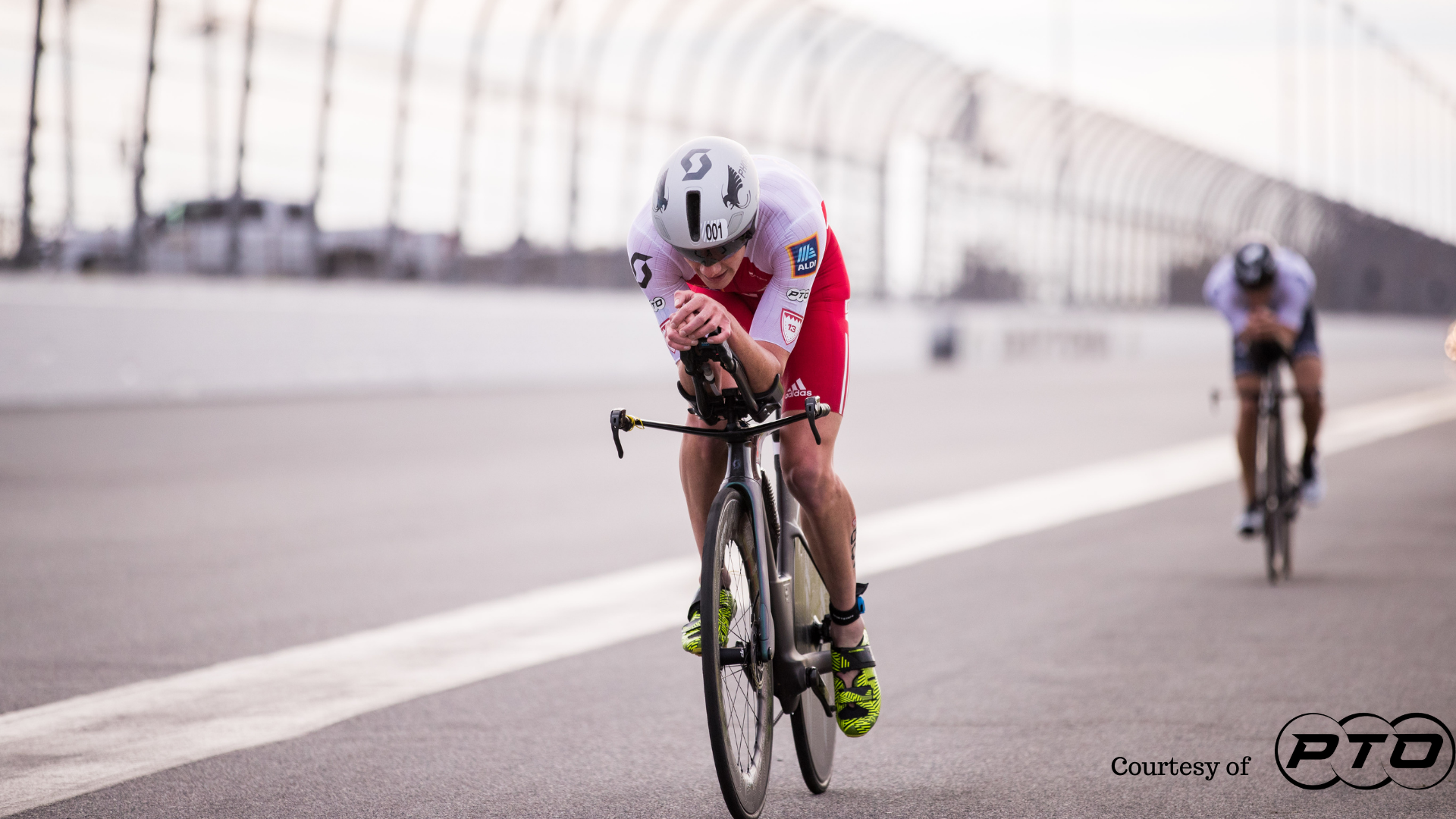Fat is an important fuel substrate of which the body always maintains a relatively large reserve in its stores. A single molecule of fat fully oxidized will yield 129 molecules of ATP compared to 39 ATP molecules from a molecule of carbohydrate. The rate at which these molecules are oxidized largely dictates which becomes the preferred fuel source. As fat requires more oxygen and is slower to produce ATP, carbohydrate generally becomes the favoured source as exercise intensity increases. This is the reasoning for so much emphasis on high carbohydrate diets for endurance athletes. There is a very obvious benefit to having a large, full fuel store of carbohydrate (Glycogen) to supply glucose throughout exercise with exogenous sources (ie. Drinks, bars and gels etc).
As we train, we adapt to be able to provide and utilize more energy. This allows us to produce more power and move faster. In addition our movement economy and efficiency allows us to move faster with less effort. The combined effect is that we become faster for less energy cost.
What we don’t tend to realise is that as we produce more power we will require more energy to sustain our effort. High intensity interval training is extremely popular as it is a time efficient way to train, yielding many positive adaptations. As it is of higher intensity, it will rely on carbohydrate to be completed effectively. Athletes are well aware they need to fuel their training to maintain quality and effectiveness. Carbohydrate is quite correctly the fuel of choice for these workouts.

What is a little less well known is that constantly fuelling training with carbohydrate will understandably result in a preference for carbohydrate as the preferred fuel source. Training at high intensity also focuses development on the glycolytic energy system. What this means is that carbohydrate becomes an even more essential fuel source during training and competition. Most of our endogenous stores are in the form of glycogen within the muscle and liver. These storage depots are relatively limited and quite rapidly depleted. In order to prevent depletion we must consume exogenous carbohydrate in the form of sports drinks, gels and other food stuffs.
As our reliance for carbohydrate increases alongside our ability to produce greater power and overall work, we start to put a lot of pressure on our ability to supply fuel during long efforts. We may begin to expend faster than we can consume. Unfortunately, limits with absorption and tolerance limit the amount of exogenous carbohydrate we can consume during exercise. It can also be logistically hard to carry and consume foods adequately during exercise. Overall, we can struggle to fuel the efforts we are capable of reaching as durations extend.
For many ultra-endurance athletes such as Ironman competitors, running out of fuel is a real concern. In addition, gastrointestinal discomfort (bloating, cramping, nausea, vomiting and diarrhoea) are common during exercise as the gut is under stress. Our digestive system competes for blood supply but also gets thrown in motion with our activity. This makes it quite challenging to consume and absorb the volumes of food needed to meet fuel demands. These combine to create a pretty common disaster situation during competition.
Fat in these circumstances may offer some benefit. While it might seem like an obvious option, consuming fat is not the answer, as it is slow to break down and absorb. Attempting to consume it would exacerbate the above issues. As mentioned before we already have quite substantial stores of fat within our body, more than adequate in quantity to supply energy for days.
The challenge with fat is that it is slow to utilize and it is less likely to meet the demands of even moderate exercise. We cannot expect to fuel high intensity exercise with fat as it is simply too slow to supply ATP and it requires adequate oxygen to process. Oxygen supply is a determinant to exercise capacity which means fat just isn’t ever going to be our high intensity fuel. As many of us become carbohydrate dominant we are even less likely to suddenly be able to use fat.
The typical Ironman athlete burns carbohydrate as the predominant fuel. They will have some contribution of energy from fat but often it is not substantial. If an athlete can adapt to use fat as a fuel more effectively they can reduce the reliance on carbohydrate and ease the demand for supply.
Sparing glycogen is a key factor in Ironman racing and exogenous fuel sources are used in an attempt to do so. If fat usage can also be increased then sparing glycogen can be promoted even further. Athletes who can utilize fat further up the intensity range will likely have a much easier time of sustaining fuel supply and avoiding glycogen depletion. The end result is they can go faster for longer.

Becoming a more metabolically efficient athlete will often yield better results at long distance than becoming a fitter one. For many, their conditioning is not the limiting factor in their success.
So how does one become a better fat burner? There is a twofold approach.
Firstly we can adjust our training. Long duration, low intensity training allows the body to be more efficient at utilizing fat. Oxygen delivery and mitochondrial adaptations occur allowing for a greater ability for fat oxidization. This is somewhat neglected with higher intensity training methods. Training to increase the threshold of our fat usage (Fatmax) is possible with an adequate volume of low intensity training. This must occur at or below the first lactate threshold. As lactate rises it indicates the preference for carbohydrate as fuel. Training above this point simply ends up exacerbating the issue rather than solving it.
Secondly our diet can help support the process. If we consume a high carbohydrate meal or food stuffs with a high Glycaemic index we will experience a rise in blood glucose. When glucose is present in the blood our body will try and consume it both to maintain homeostasis and also because it is the preferred fuel source. If we can keep our blood glucose concentration at more moderate levels then there is less of a tendency to grab it; fat now has an opportunity to be involved. Keeping our general blood glucose levels stable will help us keep fat involved throughout the day and steers us to being more metabolically flexible.
We can combine these approaches with fasted training. After a fast our blood glucose levels are generally reduced. If we train at low intensity it allows our body to recognise fat as a viable fuel source. The more it has to do this, the more it will adapt to be capable of doing it even better. Over time this promotes a positive adaptation towards using fat as a fuel. This approach has its limitations though. If the exercise is too intense or too long we put too much pressure on our ability to supply fuel. Chronic under fuelling will eventually have a negative impact on energy use and power production. It may also lead to general problems with energy requirements and energy deficits which can become dangerous and are certainly detrimental to both health and performance. A conservative approach to fasted training is advised to reap the benefit without causing this detriment.

To summarise, becoming a better fat burner will support your ability to sustain efforts for longer by taking some pressure off the demands for fuel. It does not replace carbohydrate but can lessen the reliance on it. This makes supplying through endogenous sources a little more achievable. Maintaining fuel supply is absolutely critical to support success over the Ironman distance. In order to achieve this, large volumes of training at low intensities are required for sustained periods. In addition, the maintenance of stable and normal blood glucose is also advised. Fasted training may also help promote the process but in moderation. High Fat Low Carb (HFLC) diets have shown some benefit but can also impede overall fitness with inadequate carbohydrate intake to support greater intensity. Carbohydrate will always be the preferred fuel but if we can manage to get fat a little more involved it can unlock a much higher level of ability over longer durations.
